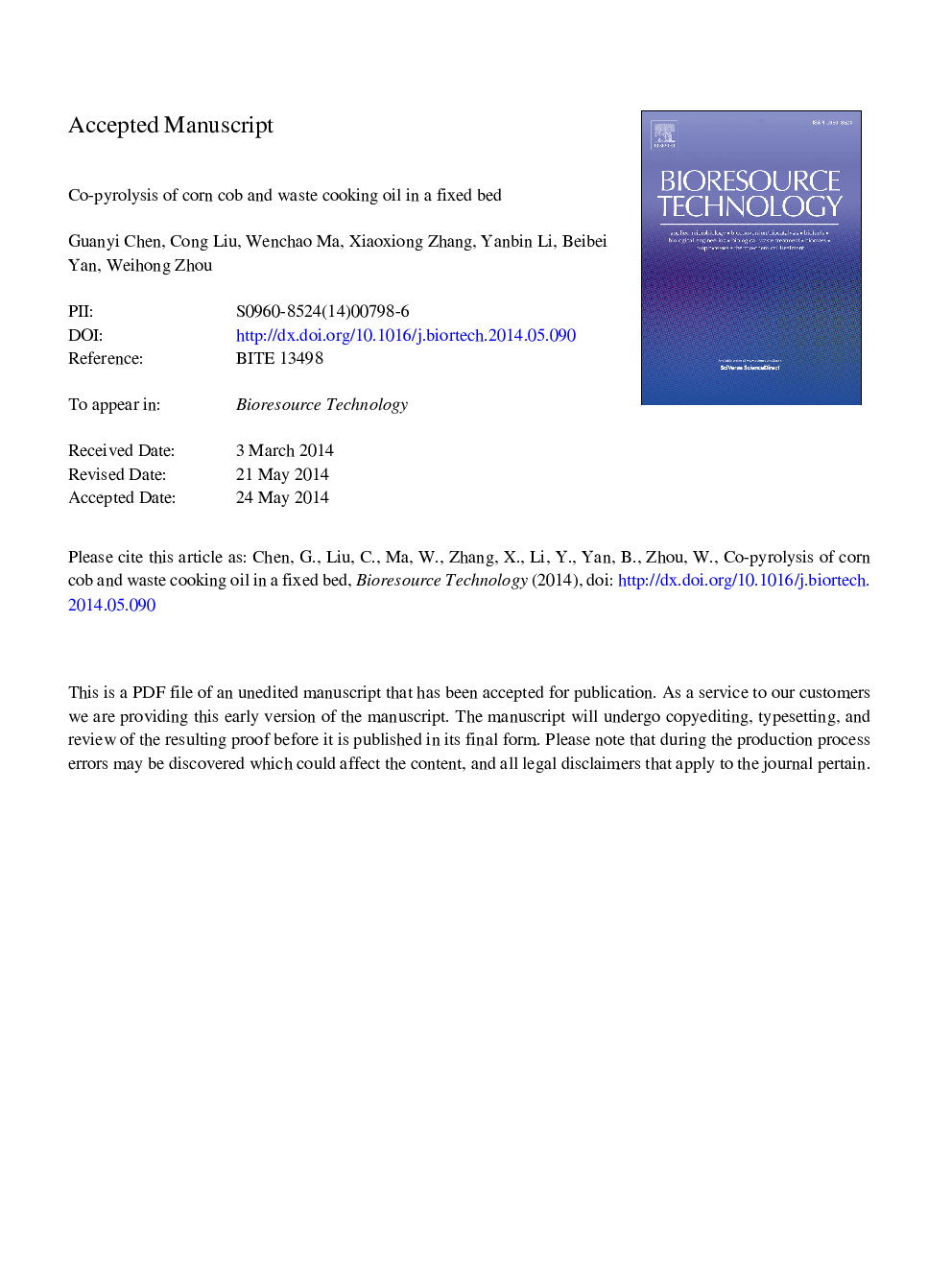| Article ID | Journal | Published Year | Pages | File Type |
|---|---|---|---|---|
| 7077315 | Bioresource Technology | 2014 | 38 Pages |
Abstract
Corn cob (CC) and waste cooking oil (WCO) were co-pyrolyzed in a fixed bed. The effects of various temperatures of 500 °C, 550 °C, 600 °C and CC/WCO mass ratios of 1:0, 1:0.1, 1:0.5, 1:1 and 0:1 were investigated, respectively. Results show that co-pyrolysis of CC/WCO produce more liquid and less bio-char than pyrolysis of CC individually. Bio-oil and bio-char yields were found to be largely dependent on temperature and CC/WCO ratios. GC/MS of bio-oil show it consists of different classes and amounts of organic compounds other than that from CC pyrolysis. Temperature of 550 °C and CC/WCO ratio of 1:1 seem to be the optimum considering high bio-oil yields (68.6 wt.%) and good bio-oil properties (HHV of 32.78 MJ/kg). In this case, bio-char of 24.96 MJ/kg appears attractive as a renewable source, while gas with LHV of 16.06 MJ/Nm3 can be directly used in boilers as fuel.
Related Topics
Physical Sciences and Engineering
Chemical Engineering
Process Chemistry and Technology
Authors
Guanyi Chen, Cong Liu, Wenchao Ma, Xiaoxiong Zhang, Yanbin Li, Beibei Yan, Weihong Zhou,
